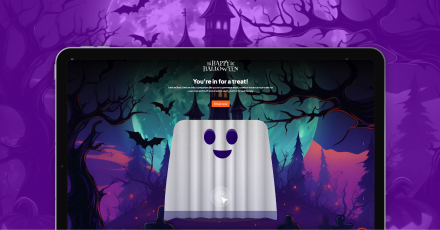Employee engagement. Some people see it as a miracle cure for workplace challenges. Others say it’s become an overused buzzword. Somewhere in the middle is the reality: engaged employees do perform better, are less likely to have health problems, and are also likely to stay with a company longer.
Recent polls found that boredom is the top reason people look for a new job. That’s closely followed by feeling disengaged from the company’s culture and not being given opportunities for professional growth.
As former Campbell Soup CEO Doug Conant once said, “To win in the marketplace…you must first win in the workplace. I’m obsessed with keeping employee engagement front and center.” And he obviously knew what he was talking about. In a decade (1999-2009) that saw the S&P 500 stocks lose 10% of their value, Campbell Soup’s increased by 30 percent!
A good employee engagement strategy is much more than keeping employees entertained or happy. Here are 13 excellent reasons your organization should focus on engaging people and creating an environment where employees thrive.
1. Better staff retention
When employees feel they can’t work to their strengths, say they aren’t challenged enough or don’t enjoy their work (all indications of low employee engagement), they’re more likely to quit. Engaged employees, however, don’t have a reason to look elsewhere. Employees who feel motivated and productive are more likely to buy into your organization’s mission.
2. Increased productivity
Research shows that engaged employees are at least 17 percent more productive than their peers. They’re also more likely to be conscientious about their work and are willing to go the extra mile when necessary.
3. Better quality of work
Tom Peters, the author of “In Search of Excellence”, believes “Becoming innovative and productive relies on having the right people engaged with what the organization is aiming to deliver.” And those people, he says, are people who care deeply about what they do. Engaged employees fire on all cylinders.
4. Lower stress
Overall, organizations report $250 billion lost each year due to employee stress. Peer pressure, threats of termination, and other high-stress behaviors are not the way to motivate employees. Practices like employee recognition, two-way feedback, and open communication both lower stress and make employees feel seen and heard. That makes them happier in the workplace.
5. Increased customer satisfaction
Even with the rise of online shopping, customer service is more important than ever. Engaged employees care about doing a good job, and that’s reflected in how they treat your customers and clients.
6. Better work culture
Organizational culture is about how and why things get done the way they do. It reflects employee behaviors, the workplace environment, and office rituals. Every organization’s culture is different, but those who build one that sets clear goals, defines employee responsibilities, creates a trusting environment, and encourages employees to grow continuously are the ones who stay competitive and have employees who feel connected.
7. Higher attendance and fewer sick days
Did you know those lonely workers take twice as many sick days as those who are engaged? And engaged employees are less likely to be overweight or suffer from chronic disease and more likely to eat healthier and exercise more. Experts believe it’s because workplaces that respect their employees’ needs also encourage them to take care of their health.
8. Improved company reputation
As ambassadors for your organization, employees greatly impact its reputation. Engaged, happier employees are enthusiastic about their work and tend to speak well about where they work. Unfortunately, disengaged employees can do a lot of damage inside and outside the workplace.
9. Continuous improvement culture
If culture is the foundation on which success is built, a continuous improvement culture is one where the collective capacity of your employees creates real value for your organization. How do you create a culture of continuous improvement? By, among other things, inviting your employees into the problem-solving process, removing barriers to improvement, and recognizing and rewarding improvement.
10. Have a better work-life balance
Engaged employees are happy at work and home. They understand the importance of a work-life balance and how it can reduce stress and help prevent workplace burnout.
11. Better quality of job applications
Not so long ago, an employee took a job with a company and stayed there for decades before retiring. Times, of course, have changed, and massive shifts in everything from the economy to technology have impacted the workplace and workforce, with top-level job candidates highly competed for. Organizations that emphasize employee engagement and not just company perks are better positioned to attract those qualified applicants.
12. Stronger employee relationships
Employee engagement is not the same as employee satisfaction. The first encourages everyone to achieve greater achievement; the second measures a minimum level. Measuring employee satisfaction is important because it is key to why employees aren’t engaged. More times than not, it’s because they don’t feel valued.
13. Promotes progression and success
It’s important to focus on things like building a fun, engaged culture, but many organizations forget to prioritize the #1 thing employees say they want, career growth. A majority of workers say they’ll move to another job if they feel they can’t keep their skills up-to-date at their current position. A workplace environment that consistently allows employees to improve their skills and move upward is a highly competitive advantage.
Ramp Up Your Employee Engagement Approach
Employee engagement is proven to drive employee, team, and business success. Employee engagement initiatives such as gamification are a terrific way to boost employee engagement and productivity levels. How do we know? Nearly 90 percent of employees have said so!
Gamification is a fun way for employees to work towards goals, gain real-time insights, and receive feedback from senior management. To ensure gamification success:
- Goals should be clearly defined
- How employees participate must be fully understood
- The games should be well-designed
Some good examples of effective workplace gamification include trivia competitions, video contests, and custom apps designed for sales teams.
About BeeLiked
At BeeLiked, we’re in the business of helping companies build a culture where employees thrive, grow, and become more engaged. We know that when employees feel valued, their engagement and satisfaction rise, and they’re motivated to be more productive. Our customizable gamification solutions help you empower and engage employees, recognizing them for the qualities, behaviors, and values they bring to the workplace.









